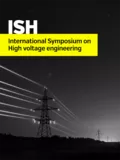Summary
To obtain very high temperature in tokamaks plasma, many technics exist such as Joule effect, injection of neutrals and electromagnetic waves. Lower hybrid electromagnetic wave propagation is an interesting method to generate current in tokomaks by Landau wave particle resonance. The aim of this communication is to present the so-called “full wave” simulation of electromagnetic wave propagation in magnetized plasma. Realistic full-wave computations are a hard problem to consider because of the short wave length with respect to the machine size. For simulation purposes, the tokamak plasma volume is represented by a torus-shaped geometrical domain. A strong external time-invariant magnetic field pervades the plasma. An antenna located on the boundary of the torus emits the waves. In the present work, we consider the time harmonic case. Then, the Maxwell system of equations become a second-order elliptic partial differential equations, the divergence condition is considered as a constraint. The plasma response matrix includes a cold plasma approximation of the relative dielectric permittivity tensor and Landau damping. Expressions of the entries involve plasma and cyclotron frequencies of each species (ion and electron) and also the collision frequency. In general, the matrix is complex-valued and non-Hermitian Essential and natural boundary conditions are considered to simulate an antenna. The initial model is three-dimensional, but for simulation purpose we reduce the problem to a two-dimensional one using cylindrical coordinates and Fourier series. We propose a numerical method using a mixed augmented modal variational formulation. To efficient simulate non-homogenous plasma response, we present a non-overlapping domain decomposition method. In each subdomain the variation formulation is discretized using Taylor-Hood finite element. Lagrange multipliers associated to the interface conditions have been introduced to have a dual formulation of the jump between sub-domains conditions. This multidomain formulation is well-posed and equivalent to the one-domain formulation. After discretization, the linear system involving all subdomains is a generalized saddlepoint problem with a block sparse and non-Hermitian matrix. Indications about the computation of the entries of the stiffness matrix and how to solve the linear system are given. The linear system is solved using a preconditioned GMRES algorithm. Numerical examples of relevant modes are presented.
Additional informations
| Publication type | ISH Collection |
|---|---|
| Reference | ISH2017_309 |
| Publication year | |
| Publisher | ISH |
| File size | 2 MB |
| Pages number | 6 |
| Price for non member | Free |
| Price for member | Free |



